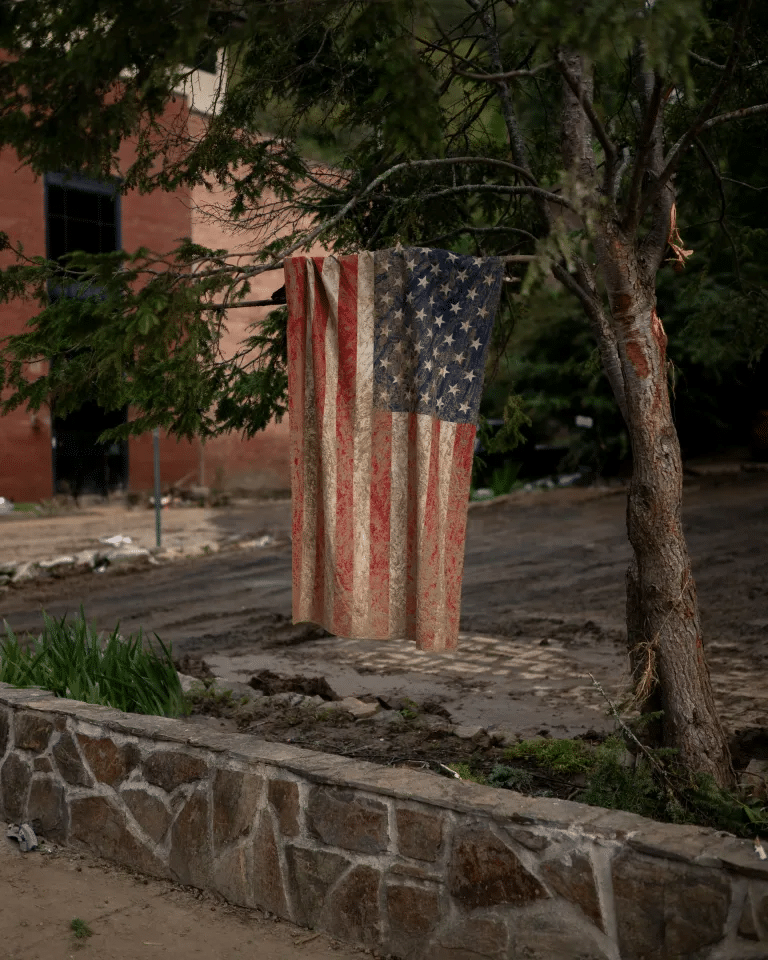
Hurricane Helene: The lasting effects of an unstoppable force of nature
Photo Courtesy of Jack Flame Sorokin
Colby Craig, Staff Writer
The devastating weather event of hurricane Helene has left many places in ruin. While most roads and towns are up and running as usual, some are still in recovery after over two weeks since the storm made landfall.
Nearly all of the major roads and highways leading out of South Carolina are cleared from hurricane damage, excluding a few roads heading towards Charlotte, North Carolina. According to the South Carolina Department of Transportation, major roads still closed include Long Creek highway (US 76), Moorefield Memorial highway (US 176), Old Highway 25, and Saluda Road.
On the other hand, western North Carolina was utterly destroyed by the horrible weather. A very large portion of the western side of the state is still labeled as essential travel only. There are over 500 reports of hurricane related road obstructions with varying levels of drivability listed on DriveNC.gov. The devastation of the area is being fixed by workers day and night, but progress is slow.
Helene made landfall in Perry, Florida, on Sept. 26, 2024, and worked its way up to Tennessee, North Carolina and South Carolina over the course of the next couple days. The destruction caused by the storm left many without power, but over the course of these two weeks, only 526 locations within South Carolina are without power according to poweroutage.us. However, neighboring states are not so fortunate, as nearly 21 thousand locations are without power.
The destruction does not just stop at the roads of North Carolina. While most of South Carolina is relatively unharmed, places like Asheville, Marshall and Chimney Rock are destroyed. Chimney Rock Village is completely gone. Asheville is completely underwater. Marshall, a bustling, artistic town, is a shell of what it was before.
Roads leading to these places have been completely washed away in certain spots because of landslides and sinkholes. The cleanup process is taking place in every area of the disaster, but progress is slow due to the few people who are willing or able to help.
Many universities have also been heavily affected by this disaster. Appalachian State University has been out of school since the storm hit on Sept. 27. Their Boone campus lost power for several hours. School is expected to resume on Oct. 16. Many buildings flooded and had to be cleaned up over the course of the last two weeks, but things have improved drastically for App State.
Montreat College experienced flooding like most other places in North Carolina, but everyone is safe. The most devastating damage was to the McAlister Gymnasium where there was significant flooding and water damage. The president of Montreat has been giving daily updates on their website, and the most recent update states that in person classes are resuming Oct. 21.
UNC Asheville experienced much of the same things that the rest of western North Carolina experienced. The campus was subject to flooding, downed trees, downed power lines, loss of cell service/internet and loss of water. Updates came daily, and Asheville was put into a state of emergency.
Throughout this time, the leaders of UNC Asheville worked to keep students safe and cared for. After their latest update, they decided to move to virtual school for the remainder of the semester.
The lasting effects of hurricane Helene have left many places unsecure and in need of help. North Greenville University has brought aid to those in need by busing students and staff up to North Carolina to assist.
Correction 10/15/2024: App State only lost power for a few hours after the hurricane on Sept. 27.
